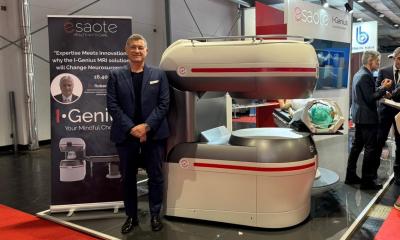Surgery
Conjoined twins successfully separated
Twin girls born joined at the pelvic and hip region are recovering after separation surgery at Nationwide Children’s Hospital. The girls are named Acen and Apio, but on Thursday they were carefully labeled “blue” and “red” to help surgeons know which monitoring equipment belonged to each sister as they carefully separated their spines, muscle and tissue.

A surgical team of more than 30 specialists from pediatric surgery, plastic surgery, colorectal surgery, neurosurgery, anesthesiology and nursing performed the operation. “Because of the delicate job our neurosurgeons had of separating the spinal cord, our team was assisted by neurophysiologic intraoperative monitoring and the technicians were able to tell us which muscles and nerves belonged to Acen and which belonged to Apio,” said Gail Besner, MD, chief of Pediatric Surgery at Nationwide Children’s. “This is the first time this specific type of monitoring has been done in a conjoined twins’ separation surgery.”
Acen and Apio Akello, the eleven-month-old daughters of Ester Akello of Uganda, were flown to Nationwide Children’s in December 2014. Earlier this year, they had surgery to have tissue expanders placed underneath their skin to prepare for their separation.
“Tissue expansion was performed during the months prior to separation in order to ensure that there was sufficient skin to cover their wounds and to complete the reconstruction,” said Richard E. Kirschner, MD, chief of Plastic and Reconstructive Surgery at Nationwide Children’s. Two neurosurgeons focused on one sister each and yet assisted each other to delicately divide their intertwined spinal cords.
“Imaging helped guide our understanding of the twins’ anatomy,” explained Jeffrey R. Leonard, MD, chief of neurosurgery at Nationwide Children’s. “In the operating room we were able to visualize and discern which nerves belonged to which twin. Our primary concern was preservation of the twins’ neurologic function so they may have adequate leg movement and bowel and bladder function once separated.”
Carefully dividing the soft tissue, Dr. Besner was the surgeon who separated the twins. She took a brief moment away from operating to go to the waiting room to tell Ester that her children were no longer conjoined. Ester does not comfortably speak English, but no words were needed to convey her gratitude.
Although the girls were now on two separate tables, the surgery was still hours from being completed. The team that was formerly huddled around one operating table now huddled around two, and additional nurses and anesthesiologists were brought in to assist in the reconstruction.
Marc Levitt, MD, and his team from colorectal surgery were tasked with making sure the girls would have fecal continence post-surgery, performing two operations for imperforate anus since neither twin was born with an anal opening. Finally, plastic surgery covered the wounds where they had previously been conjoined.
“We are extremely pleased with the outcome of the surgery,” said Dr. Besner. “We learn from every operation that we do, and when you do an operation that is as rare as separation of conjoined twins we learn a lot with every case as to how to achieve best outcomes for our patients. The introduction of pre-operative 3D modeling, as well as intra-operative neurophysiological monitoring, were extremely innovative in this case.”
Conjoined twins occur in about 1 in 200,000 pregnancies. Since 1978, surgeons at Nationwide Children’s have successfully separated four sets of conjoined twins, including the Akello sisters.
In addition to Dr. Besner, Dr. Kirschner, Dr. Leonard and Dr. Levitt, other lead surgeons involved in the case included Dr. Rajan Thakkar, Dr. Richard Wood, Dr. Gregory Pearson and Dr. Lance Governale. “Given the breadth and depth of expertise of all of our specialists, we have the potential at Nationwide Children’s to take two patients who would never have been able to have a normal life as they were before and make them into two separate individuals who, I expect, will have healthy and normal lives,” said Dr. Besner. She and the other surgeons are also faculty members at The Ohio State University College of Medicine.
It is not yet known how long Acen and Apio will remain at Nationwide Children’s before going home. They will both need to have one additional surgery to remove their colostomies, which they have had since shortly after birth. “The girls will continue to receive treatment at this time, and I can’t wait to watch them grow. My hope is that they will be able to sit up on their own, walk and play like any other child,” said Dr. Besner.
Source: Nationwide Children's Hospital
21.09.2015











